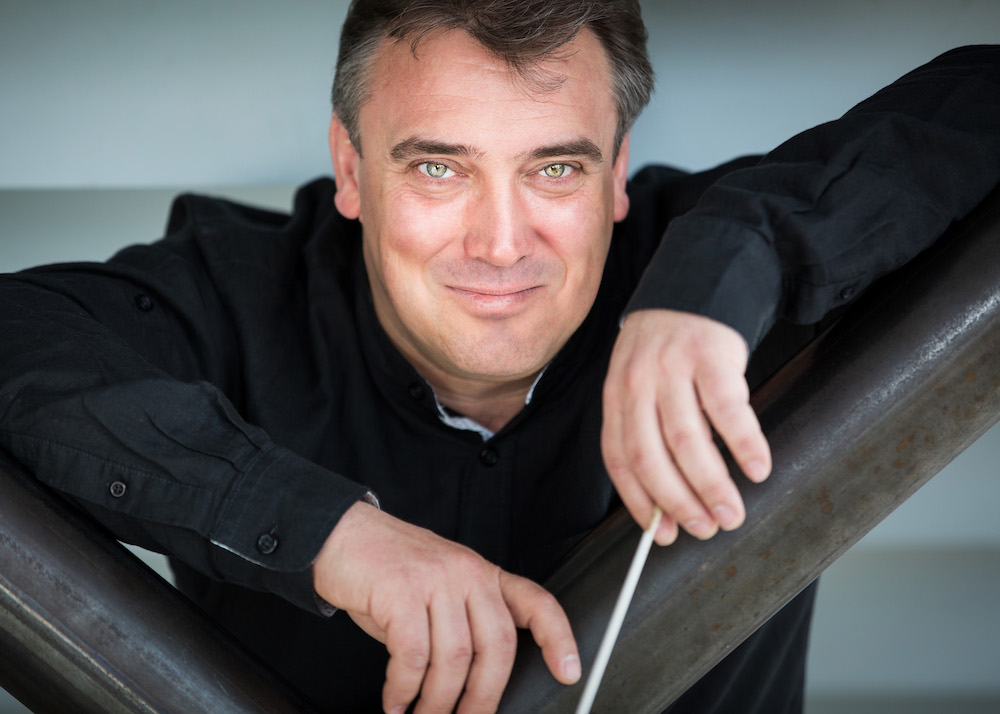Let me preface this by saying that this was probably the most energised and enthusiastic performance I’ve seen the Queensland Symphony Orchestra give in quite a while; I recall seeing a Beethoven performance a few years ago where the general vibe was somnolescent for both players and audience. Perhaps it was because this concert was being broadcast on the ABC, or because of guest conductor Jaime Martín, but this was a performance that really wowed.
 Jaime Martín
Jaime Martín
The program centred around dream-like atmospheres (hence the title of Dreamscapes), which naturally fits Berlioz’s Symphonie Fantastique as well as Elena Kats-Chernin’s evocative Mythic. I’m not terribly sure how that theme fits Copland’s Concerto for Clarinet which, to my ears, leans far more on Copland’s trademark jazzy American sound rather than anything particularly dreamlike. Yes, it means you can do the overture-concerto-symphony thing if you slot the Copland in, but surely something else might have melded a little more?
The concert began with Kats-Chernin’s Mythic, which is in quite a different style to that of her piano rags and miniatures. As the composer herself says, the piece “grew out of a passacaglia-like chordal progression which had grabbed hold of me and wouldn’t let go. I wanted to attempt a direction I had not explored previously, and that was to stay in a slow, dark mood for a lengthy period and to see where that took me”. She continues by saying that “the title Mythic refers to this mental image I had of musically entering into a large, mythical cave”. It’s indeed a dark work, although the portentous mood of the opening and closing of the piece is so effective that I almost wish that the more familiar middle section were delayed. Here, some of the Kats-Chernin trademarks come in. This more active middle section reminds me a lot of Danny Elfman’s film music (aren’t those the Michael Keaton Batman scurrying strings?), and puts the spotlight on the colours of the wind and brass.
I was very much looking forward to seeing Alessandro Carbonare perform the Copland Clarinet Concerto. He’s got an absolutely enviable resume, and plays with a beautifully delicate and refined tone – I can certainly see why he won a Grammy for a Mozart recording with DG a few years ago.
The Copland concerto is technically in three movements, but really it’s a slow and a fast section separated by a cadenza. The opening slow movement is a long elegy where the clarinet at times seemed to relax and melt into the violin part – solid ensemble playing here. The fast movement is fiendishly difficult for the clarinettist; apparently the original version was so difficult that even dedicatee Benny Goodman found it a challenge! The rhythms here are a lot of fun, with Copland apparently heavily influenced by Brazilian music. Carbonare had a lot of fun with this movement, playing up the swing references as much as possible.
Despite the difficulty of the Copland, Carbonare actually wound up playing an even flashier encore, Clarinettologia by Gaspare Tirincanti. This was a short showpiece that certainly left the audience impressed, even bursting into laughter at the ease with which Carbonare hit a ludicrously high note at the end.
The centrepiece of the performance was Berlioz’s Symphonie Fantastique. All right, it’s been played to death, but it’s still a work that’s close to my heart. Berlioz’s winning idea here was the use of the idée fixe representing the beloved, transforming and reworking this theme throughout the five movements. At the time it must have been surprising, but it’s an idea that’s stuck around, essentially setting the scene for a whole lot of film scores. The subtitle goes a long way to explaining why the idée fixe recurs as much as it does: “An Episode in the Life of an Artist” – the artist of the title takes opium and imagines a series of fantastic events, laid out in the titles of each movement.
So, with Berlioz’s flair for the theatrical, I like performances of Symphonie Fantastique to have more than an excess of the dramatic, since the work should conjure up plenty of imagery for the audience.
Here conductor Jaime Martín really impressed me, and all through the simplest of acts. He took about 15 minutes to chat to the audience about both why he liked the piece, and why Berlioz’s ideas were so revolutionary. This even included humming bits of the tunes before demonstrating with the full orchestra! This marked a profound shift; his very personal discussion of the piece humanised the performance and made it far more approachable. Program notes are terrific, but they aren’t the same as someone telling you why they care about the piece. This is a small change, ultimately, but one that I think should really be adopted more. Put it this way – my co-concert goer is not normally a classical buff, but was enraptured by both the discussion and the performance. This is how you engage new audiences.
The performance itself was excellent. As I mentioned earlier, this was QSO firing on all cylinders, and in fact I don’t think I’ve ever heard them play with such power. March to the Scaffold was appropriately dreary and the Dream of a Witches’ Sabbath appropriately horrifying. Perhaps it wasn’t a performance that will forever make me rethink Symphonie Fantastique, but it certainly was electrifying.
This was the sort of punchy and energised playing I’d love to see more of. QSO, whatever you did, keep doing it!











Comments
Log in to join the conversation.